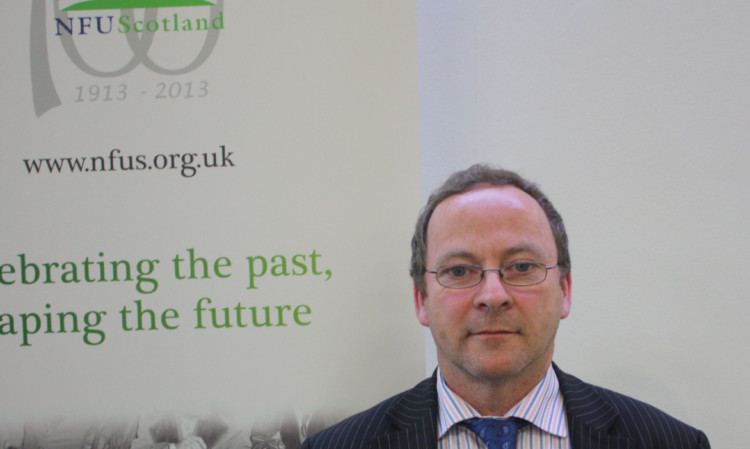When it comes to implementing the new Common Agricultural Policy, each EU member state will have to design its own rules within a basic framework.
Every country will be faced with its own set of problems but, as NFU Scotland Council members heard, Ireland and Scotland face a number of common challenges.
Fintan Conway, policy director with the Irish Farmers Association (IFA), told the Perth meeting that the so-called ‘three crop rule’ was of great concern in his home country.
It also worries some Scottish growers with more than 30 hectares of cropping land who, in order to comply with the rules, will have to grow three crops on their farms.
This is particularly the case in the north of the country where many grow spring malting barley in a monoculture.
The problem is more acute in the Republic of Ireland thanks to a land tenure model which relies heavily on the conacre system of annual cropping lets.
To gain scale, cereal growers may have land on a dozen different farms and have until now block cropped these farms to save travelling time with large equipment.
Now, thanks to what Mr Conway described as a “crazy” proposal, it was possible that each unit would need to grow three crops each year instead of one.
In preparation for the forthcoming CAP implementation consultation with the Irish government the IFA had compared average combine harvester working hours in England with those in Ireland.
In England a combine spent 74% of its engine hours efficiently at work in the field.
The comparable figure in Ireland was already only 53%, with the rest of the time spent on the road.
If the Irish government accepts the three-crop rule this position will be dramatically worse, with machines on the road more than in the field.
“We will be growing crops to satisfy bureaucracy,” Mr Conway said.
The IFA had a number of solutions, including approving four- or five-year rotations to allow block cropping or making concessions where organic manures were used.
The Irish government is of course closer to its farmers than is the case in many European countries. Food and farming is by far the most important sector in Ireland, providing 300,000 jobs or 15% of all employment.
As a measure of the importance the government places on an active and viable agricultural industry it has already paid out 90% of Single Farm Payment to its farmers using the bad weather derogation available to all EU member states but not taken up in Scotland.
Simon Coveney, the Irish farm minister, chaired the Council of Farm Ministers’ meetings in the lead-up to CAP agreement and will be very familiar and one suspects sympathetic to IFA demands.
It is widely expected that what has become known as the “Irish tunnel” will be adopted.
Mr Conway explained that this was a form of internal convergence which would over a period of five years bring down the highest per hectare SFP payments while at the same time raising the lowest so that no farm would attract less than 60% of the average.
Add in the complications of breaking up the country into regions, and it could be a recipe for bureaucratic overload.
Mr Conway was confident, however, that this was not a reason to go for a simpler set of solutions. In his view the Irish government would make sure there were sufficient resources available to ensure SFP funds were distributed on “Day One” or the first available opportunity. “Making them on Day Two just would not be accepted by Irish farmers,” he said.
Mr Conway raised a chuckle from the NFUS members when he outlined the IFA proposals for land earmarked as Ecological Focus Areas (EFA). Describing EFAs as “thinly disguised set-aside” he said almost every area of a farm should be eligible including waterways, hedges and existing woodlands.
The IFA would also push for farm roads to be included on the grounds they were expensive to install but once there had the environmental benefit of reducing soil erosion.
Some would see them as “rabbit runways”, but that just added to their credibility as EFAs, he said.
